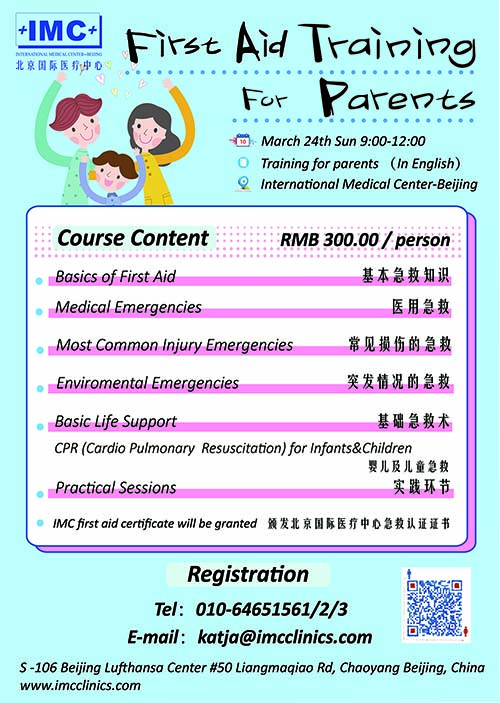News& Information
-
Medical Trends
 Home -> News& Information -> Medical Trends
Home -> News& Information -> Medical Trends
Learn First Aid and teach your children
First aid is a vital skill that many youngsters should learn, as medical emergencies can happen anytime or anywhere. Many schools have yet to include first aid training into their curriculum; however, the current state of education focuses on the many other skills that are said to help children succeed in the 21st century.
Learning to administer first aid is a life-saving action, and in fact, the Red Cross believe that children aged between 5 and 11 should be taught basic first aid to ready them and other lives in emergencies.
What are the essential first aid concepts to teach to children?
· How to get hold of emergency services
In a medical emergency, it is crucial to seek immediate help. So children need to know how to call emergency responders using different communication devices like smartphones and computers. That aside, emergency contacts or important hotlines should be always visible and accessible in common areas at home.
· What information to tell a rescuer
Once children successfully get hold of an emergency service, the next crucial step for them is to properly describe someone’s situation, as well as the surroundings. Teach children how to explain a situation in a visual and concise way.
· How to respond to different emergencies
There are many emergencies, but the usual ones as specified by the British Red Cross are listed below, together with quick tips.
- Treating a burn: Wash the affected areas with running water. Doing so will cool down the temperature of the burned area and can help relieve pain.
- Stopping a bleed: Apply direct pressure on the bleed and elevate the affected limb. This requires a dressing, which can come in the form of gauzes or bandages, or a clean shirt.
- Stopping a nosebleed: Sit up and lean forward so that the blood does not drain down to your throat. And then pinch close the nostrils for 5 minutes to put pressure on the nose. to keep the blood from draining down the back of your throat. Pinching close your nostrils together for 5 to 10 minutes to put pressure on the part that’s bleeding. Breathe through your mouth.
- Helping someone who’s choking: Hit the person firmly on the back, and check their mouth.
- Helping someone unresponsive: Check if the person is breathing. If they don’t, tip their head back to open their airway.
- Helping someone experiencing an allergic reaction: Try to keep the person away from the allergy source and tell them to immediately take their anti-allergy medication. If the allergy is severe, call emergency services as soon as possible.
- Helping someone who has had a bad fall: Do not move the person as it may result in even further injury.
Saving lives is one big concept in learning first aid, but for children, it can also help them build their confidence and improve their communication and leadership skills.
If you want to learn first aid yourself, and then teach the members of your household, we are conducting a first aid training for parents.
Next trainings:
· February 17th from 9am to 12pm – FULLY BOOKED
· March 24th from 9am to 12pm
See the poster below for more details.





